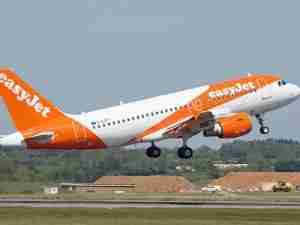LoBiondo Statement from Hearing on Unmanned Aircraft Systems
posted by AJOT | Dec 11 2014 at 09:22 AM | Air Cargo
Chairman Frank LoBiondo (R-NJ)
Subcommittee on Aviation
Hearing on “U.S. Unmanned Aircraft Systems: Integration, Oversight, and Competitiveness”
Opening Statement
(Remarks as Prepared)
December 10, 2014
The United States has long been the global leader in aviation. American leadership in aerospace manufacturing, air transportation, flight safety, and technological innovation is tremendous. The aviation industry contributes billions of dollars to our economy, supports millions of jobs throughout our country, and is a source of pride for Americans.
Unmanned Aerial Systems (UAS) have been increasingly in the news. But they are not truly “new.” It’s been almost 100 years since the U.S. military began developing the first UAS. Like other new technologies, UAS offer both exciting opportunities and daunting challenges. The previous FAA Reauthorization Law contained provisions directing the FAA to take steps towards safely integrating UAS into our nation’s airspace by September 2015. Among other things, we directed the FAA to create test sites and regulations for UAS. The results so far appear mixed and I look forward to hearing from our witnesses today on the FAA’s efforts.
There are many issues surrounding UAS we need to consider. The first and foremost is safety. Our nation’s safety record is the result of decades of hard work by thousands, and also some hard lessons learned. Safety is the cornerstone of the U.S. aviation industry, and without it, the UAS industry cannot succeed, period. Thus, I get very concerned when I read in the Washington Post that the FAA is receiving about 25 reports each month from pilots about UAS flying too close to their aircraft, sometimes even near major airports.
Protecting privacy is equally important as we further integrate and deploy UAS, whether by individual hobbyists or in commercial applications. I know the FAA and aviation industry are taking this issue very seriously, and Congress will continue to be actively engaged.
We can all agree that UAS represent a tremendous economic opportunity. The FAA estimates that $89 billion will be invested globally in UAS over the next 10 years, and major U.S. companies have begun investing in UAS technology. There are many valuable applications in real estate, agriculture, medical transport, and infrastructure maintenance, with many more on the horizon.
It is not hard to imagine UAS making existing industries more efficient and giving rise to entirely new ones. All of this could mean new jobs and vast economic opportunities for the American people. So it also concerns me when I read in the Wall Street Journal about major U.S. companies taking their UAS R&D activities to foreign countries, such as Canada and Australia, because FAA regulations are too burdensome. It also concerns me that road builders in Germany and farmers in France today are enjoying economic benefits from UAS because safety regulators there have found ways to permit such flights. I can’t help but wonder that if the Germans, French, and Canadians can do some of these things today, then why can’t we also be doing them? I hope to get a better understanding of this issue during today’s hearing.
As I said earlier, safety is paramount and the challenges are difficult. But if there is a country that is up to the challenges of safe UAS integration, it is certainly the United States of America. We have the very best engineers, smartest inventors, creative minds, and knowledgeable regulators to ensure American leadership in aviation in the decades ahead. I know this because many of our best and brightest minds in aviation work at the FAA Tech Center in my district. The FAA Tech Center is a “one-stop-shop” for the best and brightest to research, develop, demonstrate, and validate new aviation technologies and data sources. It has had a role in many advances in flight safety, including air traffic control, which is key to safe UAS integration. It’s a place where new ideas are developed and old ones are improved. Work on UAS is underway there already, and I fully expect their contributions will continue to be invaluable.
I am interested in hearing today where we are in terms of the UAS industry and what lies ahead, what progress the government has or hasn’t made, what industry and the FAA need, and how we in Congress can help as we consider the next FAA reauthorization bill.




